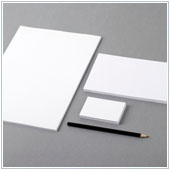 Microsoft’s Office 365 is one of the most popular office suites available, and will no doubt continue to grow in popularity in the foreseeable future. Businesses who subscribe gain access to the popular Microsoft Office programs, all of which have a number of useful functions. Take for example, templates, which offer a great way to ensure quality documents are produced. That being said, templates are often not used properly or avoided completely.
Microsoft’s Office 365 is one of the most popular office suites available, and will no doubt continue to grow in popularity in the foreseeable future. Businesses who subscribe gain access to the popular Microsoft Office programs, all of which have a number of useful functions. Take for example, templates, which offer a great way to ensure quality documents are produced. That being said, templates are often not used properly or avoided completely.
Are you using Office’s templates effectively? Here are five tips to make sure.
1. Understand the template concept
Templates can be quite helpful in certain situations, and in order to use them effectively, you should understand the whole concept behind the templates included in the various Office programs.
The idea behind the template is that it is a guide or model that can be reproduced. When it comes to Office, templates are basic documents with some elements like formatting and even content in place. Their main purpose is to help you get started, or take the time out of beginning certain tasks.
2. Avoid big changes to the default template
When you open a new document, spreadsheet, or presentation, you are usually presented with a blank workspace. While this may not appear to be a template, it actually is. When you create a new document, the program will apply what most know as the blank document, but this is really just the ‘default template’. That’s why you always get the same font type and size, etc. when you open each new document.
The default template, like other templates, is actually customizable. While this may seem a plus point, it can have negative consequences. Any changes to the template e.g., a text box halfway down the page, will always show up when you open a new document. Because of this it is a good idea to limit how many changes you make to the default template. Go ahead and change the default font type and size, and even alter document margins and width, but it is not a good idea to change much more.
3. Know the best way to create new templates
There are a number of ways you can create new templates. Most users prefer to lay a blank document out in a template format, often using placeholder text in place of actual content, then saving this file as a template. This is a pretty good way to create templates, but you should be sure that the format, including the hidden formatting, is exactly what you want for each particular template. Once you are satisfied, press the File tab, select Save As, name the file, and click on the File Type drop-down menu. Select Template option e.g., PowerPoint Template (.potx) and press Save. This will save the template for future use.
The main problem arises when you come to troubleshoot or fix one of the templates, as this can be prove tricky. Instead, try going through the new document creation menu (File followed by New and then Document or Template).
4. Apply the template before content
If you are going to use a template you should apply it before you start creating the content. The reason for this is because the template dictates how the content will look and be arranged when added. If you try to apply a template on top of content, you will find yourself copying and pasting a large amount of data, and even going so far as to format it.
If you have already created content and would like to apply a template to it, you can do so by opening a new document and applying the template there, then copying the content from the old document over to the new one.
5. Know how to apply templates
Because templates aren’t used all of the time it is easy for users to either know know how to apply them or to have forgotten how to do so. To create a new document based on a template you should:
- Open the program of choice e.g., if you are creating a presentation, open PowerPoint.
- Click on the File tab followed by New.
- Select a template from the options below the Blank Document section.
- Click Create or Download.
If you are looking to learn more about using the various programs included in your Office 365 subscription contact us today.